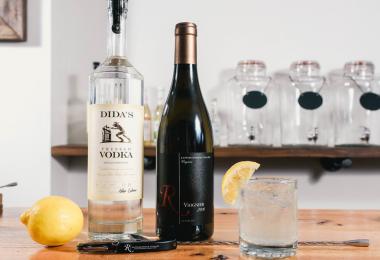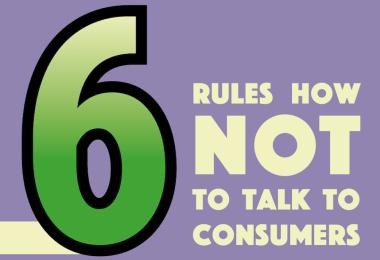Should you change the label you’ve been using for years? Ought you adopt a radically different style for the new wine you are planning to launch? In the US, at least, the answer seems to depend on whether you are aiming to sell your wine to Generations X (born between the early 1960s and 1980) and Y (the ‘Millennials’).
One person who has made a detailed study of US Millennials’ reaction to labels is Justina Simanaviciute, who has written a thesis on the subject at the Aarhus School of Business. “For now, there is a pronounced demand for funny wine labels,” she says, thanks partly to the Millennials’ greater likelihood of consuming wine during parties.
This group’s lack of reverence for traditional tropes and values is revealed in its readiness to buy wines with once unimaginable wine names such as Cupcake and Little Black Dress. These are big brands, but the model works for smaller producers, too. Peltier Station, for example, is a niche player in California, producing a fortified dessert wine that resembles port. Following agreements with the EU, regionally protected terms like port, however, are no longer legally useable outside their officially defined regions. So, the winemaker decided to name the wine a ‘USB port’ thereby calling itself ‘port’ without breaking the rules about geographic designations. The label designer, 6 West Design, also reveals that the USB-tree on the front is composed of binary code that translates to ‘Peltier Station’. The producer won’t provide exact sales figures, but it confirms that orders have doubled since they replaced the traditional label with the clever one.
Humour works
Danny Brager, vice president and group director for the Beverage Alcohol Team at The Nielsen Company in New York, says that quirky, sexy or humorous labels are proving successful with a very valuable market sector. “Vast segments of consumers, particularly Millennials, but also those in their 40s and 50s, find this kind of label attractive, to the point that it is an effective marketing trigger – one that makes the bottle stand out on supermarket shelves and get noticed.”
Baby Boomers want an eye-catching design combined with information. As Spiros Malandrakis, senior alcoholic drinks analyst at researcher Euromonitor in London, points out, the classic French wine label with its name at the centre in cursive type, surrounded by information in small type, isn’t what they are looking for. A good example of a label that reaches out to this kind of consumer is that of California winemaker Toad Hollow Vineyards red. The front of the bottle has the image of a toad dressed as a Viking with a red cape and sword. The toad holds a glass of the wine in one hand. The wine is called ‘Erik’s the Red’. The back offers offers information including pairing suggestions, descriptions of the winemaking process, and health and safety information. As Malandrakis says: “While the law obliges producers to put a certain amount of information on labels, the marketing obligation is clearly predominating over the legal one.”
The US-driven move towards adopting quirky labels for younger consumers is not going unnoticed in Europe. In the Vendôme in France, a producer called Emile Heredia has launched a wine called ‘G-spot’, (Point G, in French) with a red G on a white background alongside a little spot. It apparently gets a laugh from most consumers. But the Gamay grapes from which it was made come from very old vines that Heredia inherited from his grandfather. So as Heredia points out: “just because the label is funny, it doesn’t mean that the wine isn’t as serious as it gets. But the amusing label does wake up the consumer who may not know much about Gamay, or thinks it’s only for Beaujolais.” Heredia is convinced the label has contributed to sales. They have, he says, “increased sharply”.
Millennials are more fashion-conscious than their parents. A few years ago, an inexpensive wine without some kind animal on the label was an exception to the rule; today, so-called “critter brands” are routinely dismissed as being “so last year”. What works today may very well not work tomorrow. As you consider the cost of yet another label makeover, you may well find yourself looking back with some nostalgia at the days of safe traditional labels. (Edited by Robert Joseph.)








